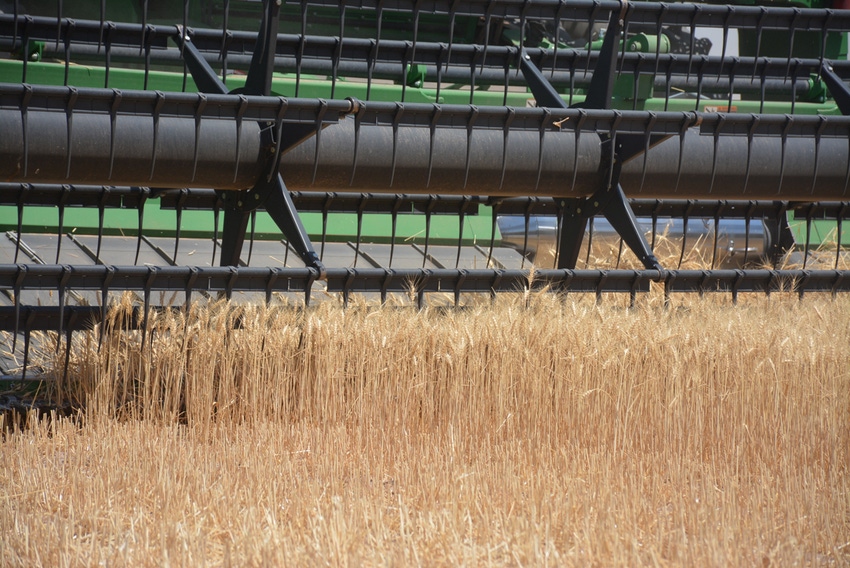January 3, 2019

“Give me a 2019 Oklahoma and Texas wheat crop with 60 pound plus test weight and 12.5 percent plus protein and I will give you a $5.75 price,” is a quote I need to retract. In my opinion, the wheat market situation has changed, and the odds are that harvest wheat prices will be less than expected a few months ago.
On January 2, 2019, wheat could have been forward contracted for harvest delivery at $4.90 in northern Oklahoma and $4.75 in the Texas Panhandle and Southwestern Oklahoma. These forward contract prices are based on a minus 25 cent basis (July ‘19 KC wheat contract) in north central Oklahoma and a minus 40 cent basis in the Texas Panhandle and southwestern Oklahoma.
One year ago (Jan. 2, 2018)), wheat could have been forward contracted for a 2018 harvest delivery of $3.85 in northern Oklahoma, $4.05 in the Texas Panhandle, and $3.80 in Southwestern Oklahoma. The 2018 forward contract price was $1.05 lower in northern Oklahoma, 70 cents lower in the Texas Panhandle, and 95 cents lower in southwestern Oklahoma than the 2019 forward contract prices.
On July 2, 2018 (harvest), wheat prices were $4.76 ($4.90 FC) in northern Oklahoma, and $4.53 ($4.75 FC) in the Texas Panhandle and southwestern Oklahoma.
STOCKS WERE GROWING
On Jan. 2, 2018, hard red winter (HRW) 2017/18 marketing-year wheat ending stocks were projected to be 470 million bushels, but ended up being 581 million bushels. Actual 2017/18 HRW ending stocks were 111 million bushels more than projected in early January 2018.
HRW 2018/19 ending stocks are projected to be 468 million bushels, only 2 million bushels lower than the same time last year, but 123 million bushels less than actual 2017/18 wheat ending stocks. So, if 2017/18 and 2018/19 projected ending stocks are about the same, why are 2019 forward contract prices higher than in 2018?
The difference between HRW wheat supply and demand conditions in January 2018 and January 2109 are quality issues, not quantity (supply projections). Both the 2016 and 2107 HRW wheat crops had below average protein, thus the wheat in storage was relatively low quality.
The 2018 HRW wheat crop had above 60-pound average test weight and above 12.5 percent average protein, which implies better quality in storage coming into the 2019 harvest and possibly, higher prices. Early January 2018 wheat prices were in the $3.60 range compared to early January 2019 prices in the $4.90 range.
RUSSIA, UKRAINE UNCERTAINTIES
Another uncertain factor is Russian and Ukrainian wheat production and export potential. Russia and Ukraine export about 42 percent of the world’s HRW wheat. Ukraine’s wheat planted acres are projected to be about 3 percent higher than last year, and both Russian and Ukrainian 2109 crops are reported in relatively good condition.
Russia also continues to provide uncertainty in the wheat market. During the 2017/18 wheat marketing year, Russian wheat production estimates increased about 550 million bushels. During the 2018/19 wheat marketing year, its wheat production estimates increased 130 million bushels, and beginning stocks were increased 36 million bushels.
Another negative factor is India’s 2019 wheat production. India is the world’s second largest wheat producer. Its wheat planted acres are projected to be higher than last year, and the crop is reported to be in better condition. India’s harvest starts in March and is normally completed by mid-May. A relatively large Indian crop could have a negative impact on world wheat prices.
Foreign and U.S. wheat conditions may have lowered 2019 harvest price expectations. What has not changed is the potential for relatively low prices if 2019 HRW wheat does not meet test weight and protein requirements.
About the Author(s)
You May Also Like






